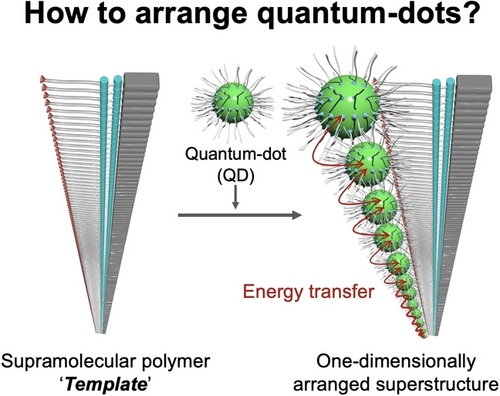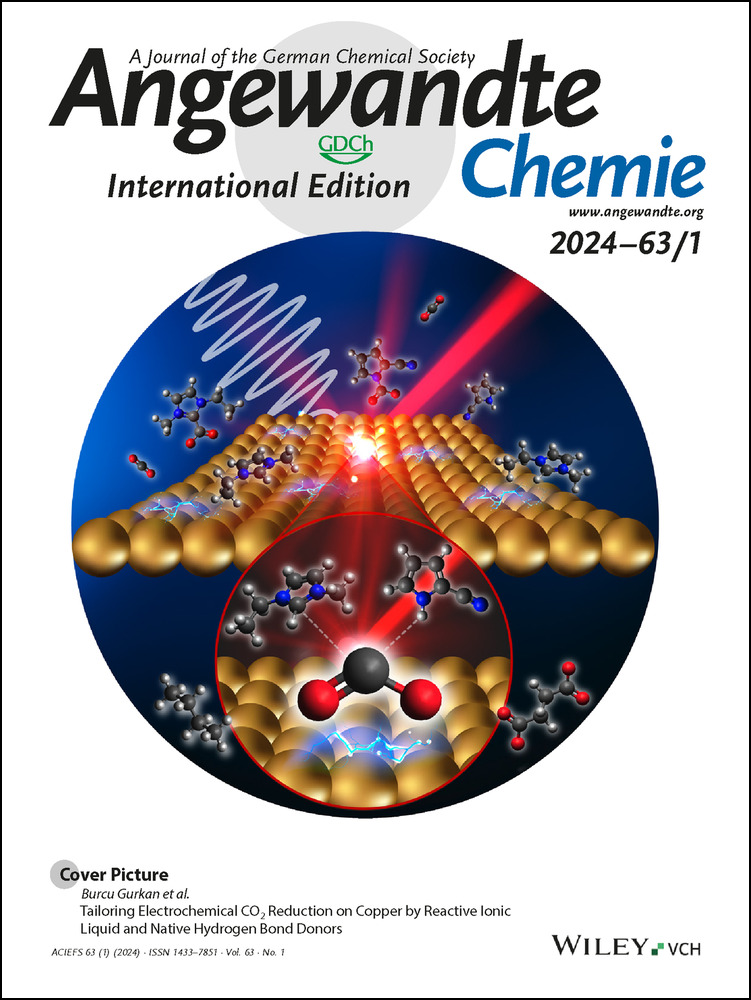One-Dimensionally Arranged Quantum-Dot Superstructures Guided by a Supramolecular Polymer Template
Graphical Abstract
A one-dimensionally arranged quantum-dot superstructure has been created by using a supramolecular polymer template composed of hydrogen-bonded cholesterol derivatives. This superstructure is not obtained by the self-assembly of the quantum dots in the absence of the template. The closely arranged quantum dots allows efficient energy transfer between them.
Abstract
Colloidal quantum dots (QDs) exhibit important photophysical properties, such as long-range energy diffusion, miniband formation, and collective photoluminescence, when aggregated into well-defined superstructures, such as three-dimensional (3D) and two-dimensional (2D) superlattices. However, the construction of one-dimensional (1D) QD superstructures, which have a simpler arrangement, is challenging; therefore, the photophysical properties of 1D-arranged QDs have not been studied previously. Herein, we report a versatile strategy to obtain 1D-arranged QDs using a supramolecular polymer (SP) template. The SP is composed of self-assembling cholesterol derivatives containing two amide groups for hydrogen bonding and a carboxyl group as an adhesion moiety on the QDs. Upon mixing the SP and dispersed QDs in low-polarity solvents, the QDs self-adhered to the SP and self-arranged into 1D superstructures through van der Waals interactions between the surface organic ligands of the QDs, as confirmed by transmission electron microscopy. Furthermore, we revealed efficient photoinduced fluorescence resonance energy transfer between the 1D-arranged QDs by an in-depth analysis of the emission spectra and decay curves.
Conflict of interest
The authors declare no conflict of interest.
Open Research
Data Availability Statement
The data that support the findings of this study are available in the supplementary material of this article.





